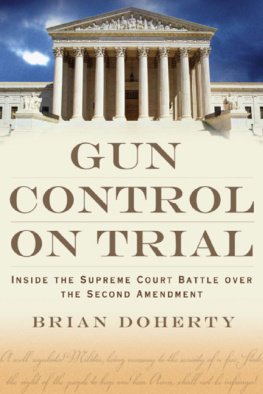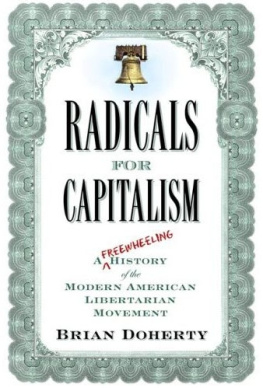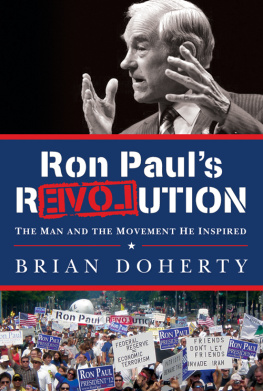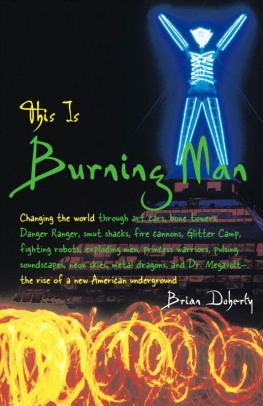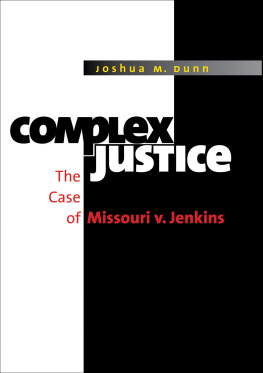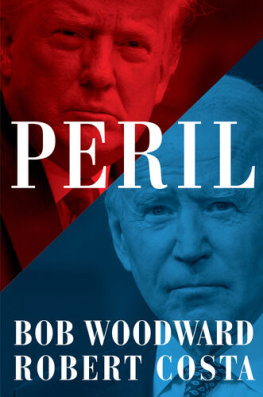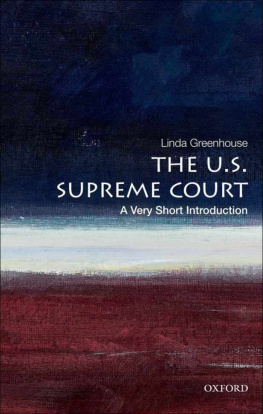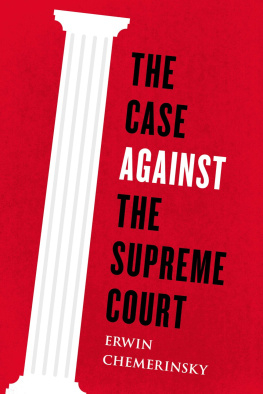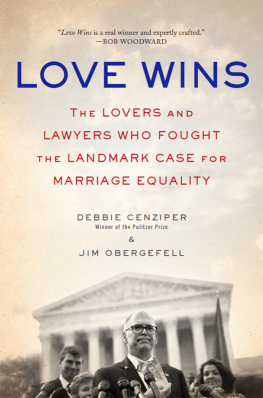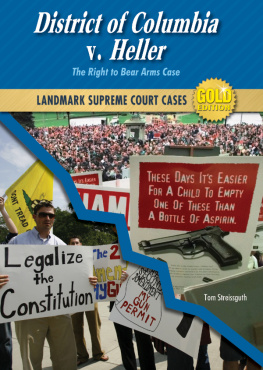1. The Roots of the Second Amendment
The Supreme Court decision in District of Columbia v. Heller declared that Americans have a right to use weapons for self-defense in their homes. That right is protected by the Second Amendment to the U.S. Constitution, the second of what is known as Americas Bill of Rights.
This declaration shocked, saddened, even outraged (as per Chicagos Mayor Richard Daley) many. However, most who objected to this ratification of an individual right to own weapons think of themselves as friends of the Bill of Rights and American liberty. The New York Times , for example, champion of the First Amendment, condemned the Courts majority as, in effect, cold-blooded killers, lamenting, The Supreme Court... all but ensured that even more Americans will die senselessly with its wrongheaded and dangerous ruling.
But the principle laid out in Heller would have seemed perfectly natural to nearly any American of the founding era. To most, it would have been so obvious that the government cant legitimately disarm a free people that even spelling it out would have seemed bizarre and pointless. That the right existedeven if, say, a Quaker might decline to practice itwas as well understood as any social or political convention could be. The only shock that would have arisen out of the Heller decision from an early American patriot would have been amazement that laws such as the ones struck down could have existed for so long without being overthrown.
Indeed, one of the advantages promised by the right to bear arms, which the Second Amendment protects, was that the U.S. government would never dare become tyrannical, since the people as a body would always have superior firepower. Even leading Federalist James Madison, who initially opposed the very idea of a Bill of Rights, promoted this idea. Its power to form a standing army notwithstanding, the federal government, Madison noted in Federalist 46, would always be facing a militia amounting to nearly half a million of citizens with arms in their hands, officered by men chosen from among themselves, fighting for their common liberties. Americans, he said, have the advantage of being armed, which we possess over the people of almost every other nation. If Madison, a leading Federalist, openly explained that one of the reasons Anti-Federalists had little reason to fear the new government created by the Constitution was Americans unaltered right to possess guns, its hard to see how anyone could deny that that liberty was an understood natural possession of Americans among the people who wrote and ratified the Second Amendment.
Like much about early American legal and political systems, understanding the Second Amendment the way Americans in the founding era understood it requires some background in English history. A proximate ancestor of the Second Amendment is this clause from the English Declaration of Rights of 1689, stating that among the true, ancient, and indubitable rights secured by it was that the Subjects which are Protestant, may have Arms for their Defence suitable to their Condition, and as are allowed by Law.
As the use of the term ancient and indubitable shows, the politicians who required William of Orange and Mary to accede to this understanding of their subjects rights before taking the English throne did not think they were political or ideological innovators. Those who wrote the Declaration of Rights wanted it understood that they were not creating the rights enshrined in it. They were merely holding the monarchy to honor such rightseven while accepting some limits as are allowed by the Lawafter nearly a century in which the right to have arms, in particular, had been threatened and harassed.
In her pathbreaking book To Keep and Bear Arms: The Origins of an Anglo-American Right , historian Joyce Malcolm convincingly argued that the English position in regard to weapons could be seen as an obligation , not just a right: an obligation to serve as peacemakers in their communities and towns, and to serve the king in defense of the realm, in a nation without professional police forces or armies.
To those who think of gun ownership and use as inherently uncivilized, who believe both personal and communal defense are properly contracted out to a select paid elite class, the scenario of individual responsibility for defense of self and community might well be even more shocking than a right to have arms. But when and if a hue and cry was heard, the Englishmans duty was to take up his arms and track down the criminals that threatened his town. He also had to do his share to keep watch at the town gates while sufficiently weaponed and keep fit with target practice in public spaces set aside in villages.
As Malcolm explains, those obligations to have and use weapons in communal defense grew to be seen as an often onerous and objectionable burden. But regarding the principle at issue in Heller home self-defensethe English were punctilious. Even during times when Catholics were otherwise oppressed (out of fear that they intended to overthrow or subvert the Protestant kingdom), the Papists were still generally allowed to keep weapons sufficient for home defense.
And despite the Declaration of Rights firm and inspirational language, the English right to arms was certainly not indubitable. A right to weapons was in the Declaration in the first place because it had indeed been violated, and recently. Before the English Civil War that resulted in the deposing and eventual beheading of Charles I, that unfortunate king tried replacing the widespread citizen militia with his own field army. In doing so, he set about confiscating the weapons of some citizen militias. The Rump Parliament of the Cromwell era then began to turn the citizen militia from its traditional role of defense of the realm into a machine to disarm the regimes political enemies.
The restoration of the monarchy in 1661 with Charles II was no restoration of unencumbered British rights, or obligations, relating to weapons. Charles II had some (understandable) mistrust of the Republican-era armies that had been responsible for his fathers loss of throne (and head). He relied more on his own select militias than on the full body of the people, banned the import of weapons and weapon parts, legally disarmed tens of thousands of former soldiers of the Cromwell era, and ruled that any two of his deputies could legally initiate a search and seizure of weapons on anyone they arbitrarily decided was a danger to his kingdom. Charles II tried to enforce an early form of gun registration by ordering all gunsmiths in the realm to report all weapons they made and to whom they were sold.
In 1671, Charles IIs regime also launched an unprecedented incursion, not merely against specific enemies, but on the general ability of Englishmen to own and use weapons: the Game Act.
The act forbade anyone without an estate with a yearly value of at least 100 pounds a year (unless of certain hereditary ranks) to have or keep for themselves, or any other person or persons, any Guns, Bowes, Greyhounds or even ferrets. It allowed any single justice of the peace, who could himself be a landowner aggrieved by some illicit weapon owners poaching, to initiate a search. England had suffered previous regulations of a roughly similar sort, restricting the use of certain weapons in hunting to people of a certain income. Such regulation was more about keeping the lower classes in their place than any careful consideration of rights, political philosophy, or even public safety. Laws meant to protect the aristocracys game hunting privileges had been common. But in the past, they had taken away only items actually used in poaching. Parliament had never before used game laws as an excuse to disarm the population generally.

